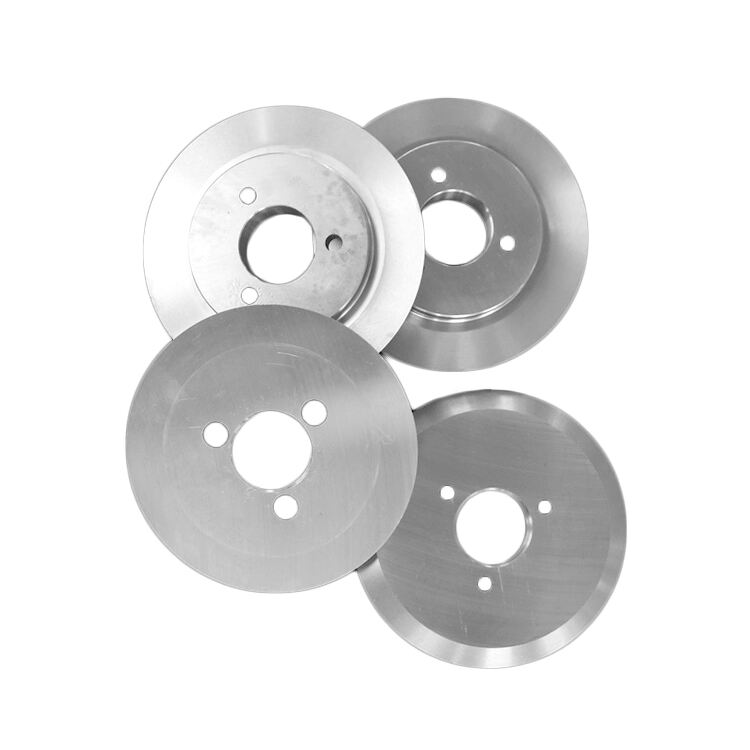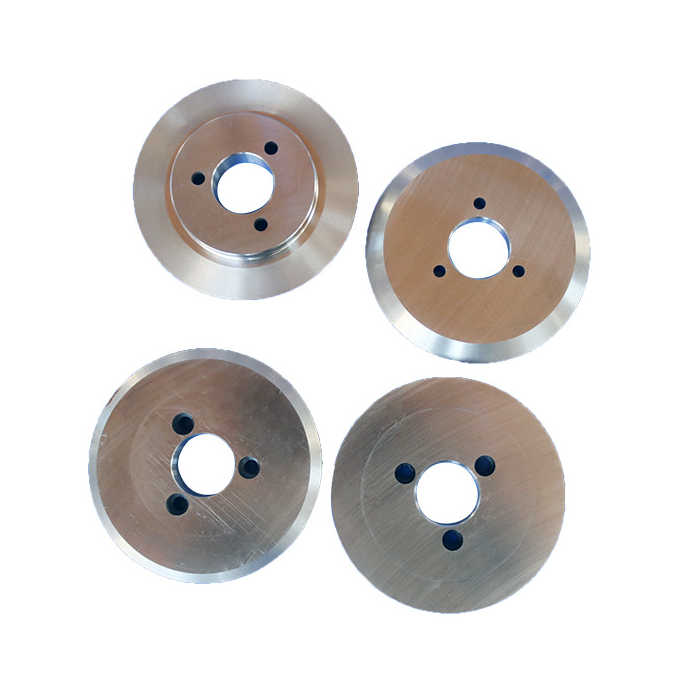What Type of Leather Cutter to Use Can Reduce Production Losses
Leather production relies heavily on precise cutting to minimize waste and maintain consistent quality. Production losses in leather cutting often come from uneven cuts, material waste, machine downtime, or damaged leather—all of which eat into profits. Choosing the right leather cutter is key to reducing these losses, as the right tool ensures accuracy, efficiency, and compatibility with different leather types. This guide explains the types of leather cutters available, how they reduce production losses, and how to select the best one for your specific needs.
Common Causes of Production Losses in Leather Cutting
Before exploring cutter types, it’s important to understand the main sources of production losses in leather cutting. These losses can be avoided or minimized with the right equipment:
- Material Waste: Poorly cut leather leaves excess scraps that can’t be used, especially with expensive materials like full-grain leather.
- Inconsistent Cuts: Uneven edges or imprecise shapes require rework, wasting time and materials.
- Machine Downtime: Frequent blade changes, jams, or breakdowns slow production and increase labor costs.
- Leather Damage: Rough cutting can tear, stretch, or mark leather, ruining pieces that would otherwise be usable.
- Labor Inefficiency: Manual cutting is slow and error-prone, leading to lower output and higher losses from human error.
The right leather cutter addresses these issues by improving precision, speed, and reliability.
Types of Leather Cutters and How They Reduce Production Losses
Different leather cutters are designed for specific tasks, leather types, and production scales. Each type reduces losses in unique ways:
1. Manual Leather Cutters (Handheld Knives and Scissors)
Manual cutters like rotary cutters, utility knives, and leather scissors are simple, low-cost tools ideal for small-scale production or detailed work.
-
How They Reduce Losses:
- Precision for Small Jobs: Sharp, high-quality manual cutters (like stainless steel rotary knives) make clean cuts on thin leather (e.g., garment leather), reducing waste from uneven edges.
- Flexibility: They work well for custom or one-of-a-kind pieces, where automation might be overkill, avoiding losses from misprogrammed designs.
- Low Maintenance: With few moving parts, they have minimal downtime, reducing losses from repairs.
- Best For: Small workshops, hobbyists, or cutting thin leather (up to 2mm) for items like wallets, belts, or small accessories.
- Limitations: Slow for large-scale production; relies on operator skill, increasing risk of human error in high-volume settings.
2. Die-Cutting Machines
Die-cutting machines use pre-made metal dies (templates) to cut leather into specific shapes with pressure. They are widely used in medium to large production facilities.
-
How They Reduce Losses:
- Consistency: Dies ensure every cut is identical, eliminating rework from uneven shapes and reducing material waste from mismatched pieces.
- Speed: They cut multiple layers of leather at once (depending on thickness), increasing output and reducing labor time.
- Minimal Damage: Even pressure prevents stretching or tearing, preserving leather quality and reducing losses from damaged pieces.
- Best For: High-volume production of standardized items like shoe parts, leather straps, or bag components, using leather up to 5mm thick.
- Advantages: Low operator skill required; fast setup for repeatable designs; works well with firm leathers like cowhide.

3. Laser Cutters
Laser cutters use a high-powered laser beam to cut leather with extreme precision. They are popular for complex designs and high-quality leather goods.
-
How They Reduce Losses:
- Precision: Lasers cut intricate shapes (e.g., patterns, holes, or logos) with accuracy down to 0.1mm, minimizing waste from imprecise cuts.
- No Contact: The laser doesn’t touch the leather, avoiding stretching, tearing, or marking—critical for delicate leathers like suede or nubuck.
- Material Efficiency: Laser software optimizes cut layouts to maximize leather usage, reducing scrap waste by up to 30% compared to manual cutting.
- Speed for Complex Designs: They handle detailed patterns faster than manual cutting, reducing labor time and increasing output.
- Best For: Medium to large production of leather goods with complex designs, such as luxury bags, leather apparel, or custom upholstery, using leather up to 8mm thick.
- Considerations: Works best with natural leathers; synthetic leathers may release fumes, requiring ventilation. Initial costs are higher, but long-term waste reduction justifies the investment.
4. CNC Leather Cutters
CNC (Computer Numerical Control) cutters use computer-controlled blades to cut leather based on digital designs. They combine precision with versatility for various leather types.
-
How They Reduce Losses:
- Digital Accuracy: CNC software precisely follows designs, ensuring consistent cuts across batches and reducing rework.
- Material Optimization: Advanced software nests patterns to minimize gaps between cuts, reducing scrap waste significantly.
- Adaptability: They can switch between blade types (e.g., oscillating blades for thick leather, rotary blades for thin) without extensive setup, reducing downtime.
- Reduced Labor: Automated operation lowers reliance on manual labor, cutting losses from human error and increasing production speed.
- Best For: Large-scale production of diverse items (e.g., furniture leather, automotive upholstery, or leather goods) with leather thicknesses from 0.5mm to 10mm.
- Advantages: Handles both natural and synthetic leathers; integrates with design software for quick design changes; minimal operator intervention.
5. Water Jet Cutters
Water jet cutters use high-pressure water (often mixed with abrasives) to cut leather. They are ideal for thick or sensitive leathers.
-
How They Reduce Losses:
- No Heat Damage: Unlike lasers, water jets don’t generate heat, making them safe for heat-sensitive leathers (e.g., exotic leathers like alligator or python).
- Thick Leather Capability: They cut thick leather (up to 20mm) cleanly, avoiding tears or uneven edges that cause waste.
- Versatility: Works with all leather types, including coated or embossed leathers, without damaging surface finishes.
- Best For: Heavy-duty cutting of thick leather for items like saddles, industrial belts, or large upholstery pieces.
- Limitations: Higher water and energy usage; slower than laser or CNC cutters for thin leather; requires drainage systems for water disposal.
Key Factors to Choose the Right Leather Cutter
To select a cutter that reduces production losses, consider these factors:
Leather Type and Thickness
- Thin Leather (0.5–2mm): Laser cutters or rotary manual cutters work best, as they avoid stretching delicate material.
- Medium Leather (2–5mm): CNC cutters or die-cutting machines balance precision and speed.
- Thick Leather (5mm+): Water jet cutters or heavy-duty CNC cutters with oscillating blades prevent tearing and ensure clean edges.
- Delicate Leathers (Suede, Nubuck): Laser or water jet cutters (no contact) avoid surface damage, reducing losses from marked leather.
Production Scale
- Small-Scale: Manual cutters or desktop laser cutters minimize upfront costs while reducing waste from small batches.
- Medium-Scale: Die-cutting machines or mid-sized CNC cutters balance speed and precision for consistent output.
- Large-Scale: Industrial CNC cutters or automated laser systems maximize efficiency, reduce labor costs, and optimize material usage.
Design Complexity
- Simple Shapes: Die-cutting machines are cost-effective and fast, reducing losses from repetitive cuts.
- Intricate Patterns: Laser or CNC cutters handle details with precision, avoiding rework from uneven manual cuts.
Budget and Long-Term Costs
- Initial Investment: Manual cutters are cheapest, but CNC or laser cutters save money long-term by reducing waste and labor.
- Maintenance Costs: Die-cutting machines have low maintenance (replace dies occasionally), while lasers require periodic lens cleaning and blade replacement for CNC cutters.
Tips to Maximize Loss Reduction with Leather Cutters
- Keep Blades/Lasers Sharp: Dull blades or weak lasers cause uneven cuts and damage leather. Regular maintenance reduces waste from poor cuts.
- Optimize Cut Layouts: Use software (for CNC or laser cutters) to nest patterns tightly, minimizing gaps between pieces and reducing scrap.
- Test on Scrap Leather: Before full production, test cuts on scrap pieces to adjust settings (speed, pressure, laser power) and avoid ruining good leather.
- Train Operators: Even automated cutters need skilled operators to handle setup and troubleshooting, reducing losses from human error.
- Choose Quality Cutters: Invest in reputable brands—cheaper machines often cause more losses from breakdowns, poor precision, or frequent repairs.
FAQ
Can a laser cutter be used for all types of leather?
Laser cutters work well for natural leathers (cowhide, sheepskin) but may damage synthetic leathers (PVC-based) by melting or releasing toxic fumes. Always test synthetic leather first.
How much material waste can a CNC cutter reduce compared to manual cutting?
CNC cutters with nesting software can reduce waste by 20–30% by optimizing pattern placement, significantly cutting losses from unused leather.
Is die-cutting better than laser cutting for high-volume production?
Die-cutting is faster for simple, repeatable shapes (e.g., belt blanks) and has lower per-unit costs. Laser cutting is better for complex designs where precision reduces rework losses.
What’s the best cutter for thin, delicate leather like lambskin?
A laser cutter or sharp rotary manual cutter is best. They cut cleanly without stretching or tearing, reducing losses from damaged leather.
How often should leather cutter blades be replaced?
Blades should be replaced when cuts become uneven or require more pressure. For CNC cutters, blades may last 8–12 hours of continuous use; manual cutter blades last longer with proper care.
Table of Contents
- What Type of Leather Cutter to Use Can Reduce Production Losses
- Common Causes of Production Losses in Leather Cutting
- Types of Leather Cutters and How They Reduce Production Losses
- Key Factors to Choose the Right Leather Cutter
- Tips to Maximize Loss Reduction with Leather Cutters
-
FAQ
- Can a laser cutter be used for all types of leather?
- How much material waste can a CNC cutter reduce compared to manual cutting?
- Is die-cutting better than laser cutting for high-volume production?
- What’s the best cutter for thin, delicate leather like lambskin?
- How often should leather cutter blades be replaced?

